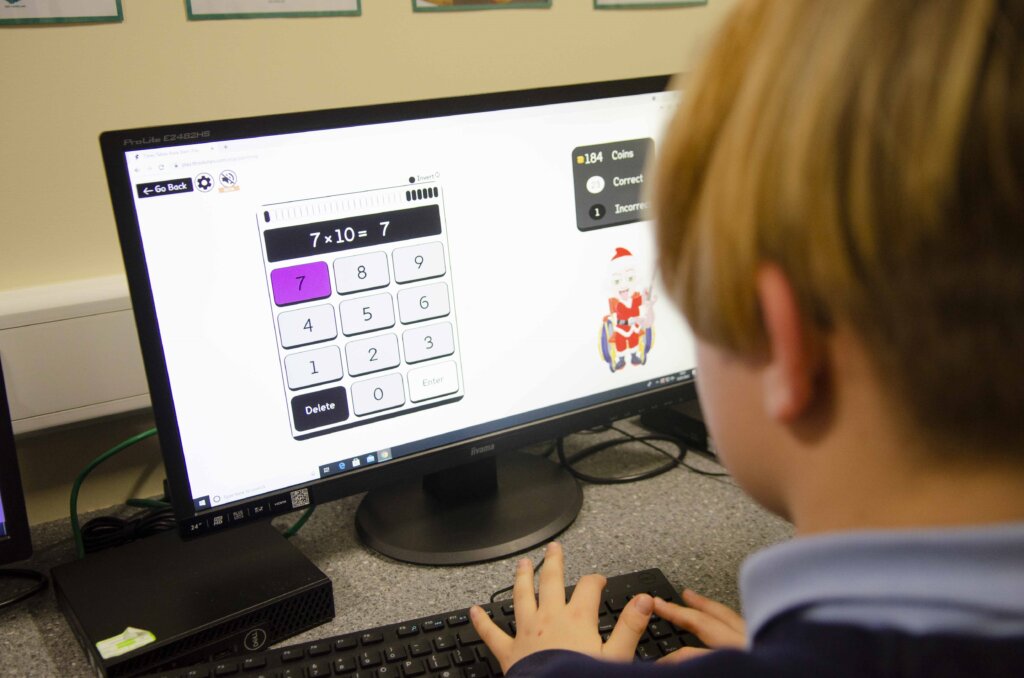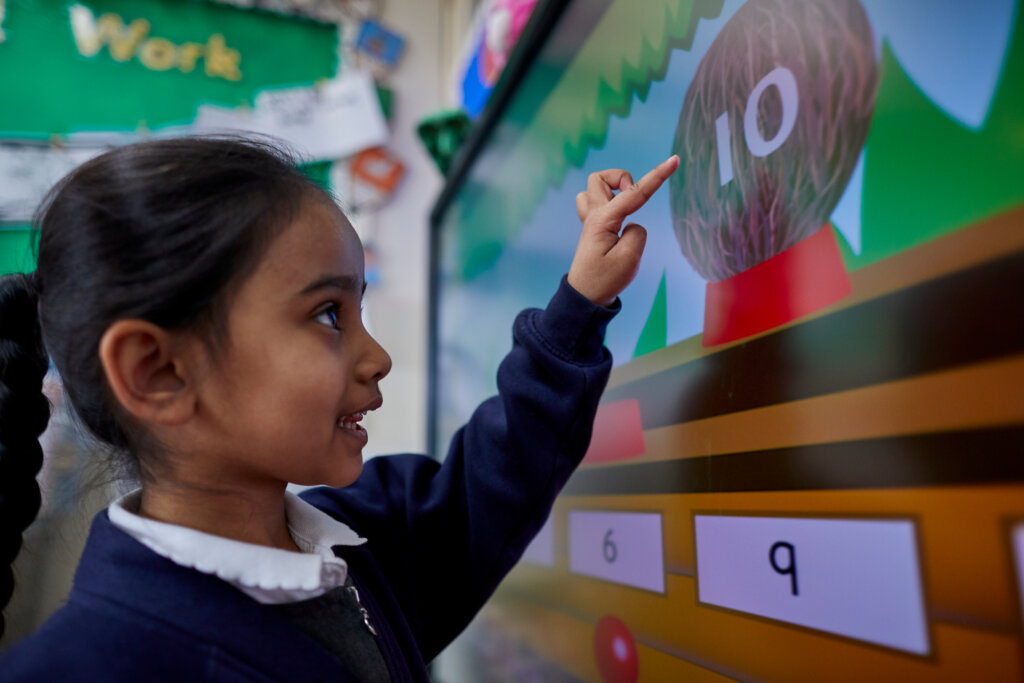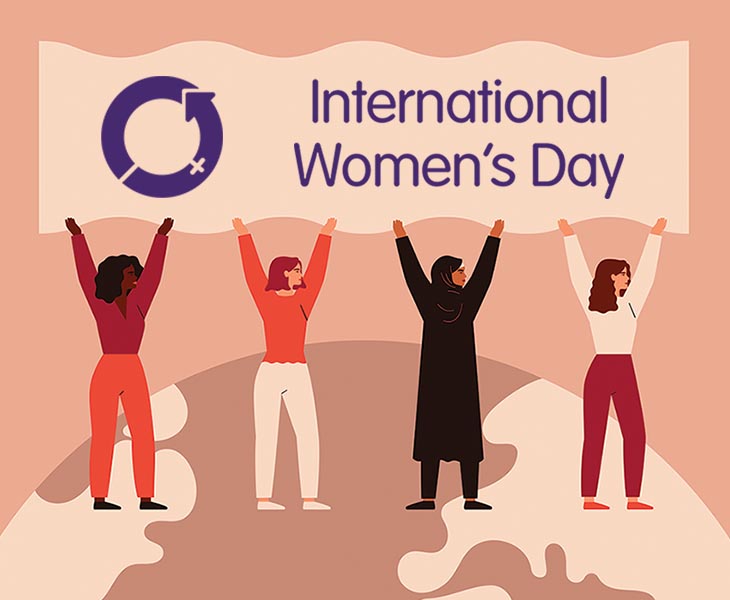Join us this International Women’s Day to celebrate the amazing achievements women have made in the fight for gender equality, and reflect on the challenges that still lie ahead. Despite all our progress, gender-based discrimination still persists in various forms. That is why One Education is passionate about playing our part to ensure girls and women are afforded all the rights and opportunities they deserve.
This year’s theme for International Women’s Day is #BreakTheBias. In this day and age, it’s hard to believe that bias still exists, especially among the younger generations. However, when asked to picture what a surgeon, an engineer, or a police officer looks like, most children will draw pictures of men performing these roles. This experiment, known as Redraw the Balance, has been conducted in classrooms across the world, from England to China and South Africa. Afterwards, the children are introduced to real professionals in those industries, all of whom are women.
Watch the children’s reactions here.
Often, biases are acquired and perpetuated subconsciously, without any intention of harm. Yet, if we fail to take a proactive approach to challenge gender stereotypes, we cannot be certain that children are making the most of all the opportunities presented to them. According to polls, over half of girls between the ages of eleven and twenty-one believe that maths, science, and sports are more suitable for boys. If girls feel that they are at an inherent disadvantage, they can easily become dissuaded from pursuing certain studies and career paths. As educators, it is our responsibility to open up possibilities to children and heighten their aspirations. By breaking the bias, we can break girls free of these limitations.
Of course, schools will not always have female scientists and fighter pilots on hand to re-enact the Redraw the Balance experiment. But simply by introducing role models and enriching lessons with a wide cast of characters; historical figures; and even avatars, we can start to change a child’s idea of what certain professions can look like.
For some inspiration, take a look at the following examples of women who exceeded expectations throughout history.
What does an athlete look like?
It might seem obvious to us that there are lots of female athletes, but they don’t often attract the same buzz as the likes of Lionel Messi or Marcus Rashford. So when we talk about sports stars, don’t forget to mention names like Emma Raducanu too. She should be pretty easy to remember, after making history last September as the first qualifier and youngest British player to win a Grand Slam title at the US Open. Raducanu started playing tennis at the age of five when her parents took her to play at the local park. She started training at the Bromley Tennis Centre and by the age of eighteen she was the British No. 1. She is now ambassador of the Lawn Tennis Association (LTA) Youth, a programme that strives to get more children playing tennis.
What does a discoverer look like?
A discoverer can look like Isaac Newton or Christopher Columbus – but they can also look like Mary Anning. Anning was born in 1799, in Lyme Regis, a town at the heart of what is now known as the Jurassic Coast. She grew up collecting fossils along the beach with her father, who sold their discoveries in his shop. Anning was only eleven when her father died, but she continued his legacy and went on to discover complete skeletons of dinosaurs, including the dolphin-like ichthyosaur, the long-necked plesiosaur, and even a pterodactyl. Despite all her discoveries, the scientific community was reluctant to recognise her work. As a woman, she was not permitted to join the Geological Society of London, which did not admit female members until 1904. Yet today, her discoveries are showcased in the Natural History Museum in London, inspiring hundreds of people to journey to the Jurassic Coast each year to see what they might find.
What does a warrior look like?
42% of girls aged seven to ten believe that boys are better at being strong. It’s not hard to imagine why, when the most famous fighters include Anthony Joshua, Connor McGregor, and legends like Alexander the Great. But strength isn’t just a male quality. Think of the Indian hero Rani Lakshmibai. She was queen at the same time as Queen Victoria, but both rulers led very different lives. Lakshmibai ruled over a small, independent kingdom to the north of India, as consort to the King. But when the King died, the British refused to recognise their adopted son as ruler. Whilst Lakshmibai tried to write letters and plead her case, tensions rose and eventually British forces arrived on her doorstep. Lakshmibai raised an army of 14,000 and strengthened her kingdom’s defences. But after two weeks of battle, the fort was breached, and she was forced to escape on horseback with her son. Ultimately, Lakshmibai would die defending him. Now, she is remembered as a warrior queen, an icon for boys and girls alike.
What does an inventor look like?
Men have invented lots of things – vaccines; aeroplanes; lightbulbs – but they didn’t invent it all. For example, the all-important technology that forms the basis for WiFi, GPS, and Bluetooth was invented by a woman. Hedy Lamarr was born in Austria, 1914. Her mother introduced her to the arts, whilst her father encouraged her to learn about machines and develop her inquisitive mind. When she grew up, Lamarr found success as an actress in Hollywood, renowned for her beauty. But she still enjoyed playing with sets of equipment in her trailer between takes. Over the years, she designed wings for aeroplanes and upgraded traffic lights, but it was when WWII began that Lamarr really wanted to invent something meaningful. She designed a new frequency-hopping communications system, which could guide torpedoes to their targets in war. Although the army didn’t use the technology in WWII, it was used in later conflicts, like the Cuban Missile Crisis in 1962. Sadly, Lamarr’s patent expired and she never saw any money from her invention, which came to be worth $30 billion. However, she finally received recognition in 1997, with the Pioneer Award of the Electronic Frontier Foundation. Lamarr died in 2000, and is remembered much more for her brains than her looks.
What does a leader look like?
When we think about what a leader looks like, Winston Churchill, Martin Luther King Jr, and JFK might be among the first to come to mind. However, another role model that children can look up to is Wangari Maathai, the woman who led the Green-Belt Movement. Concerned that deforestation was destroying the environment and the livelihoods of the local community, Maathai pioneered a community-based tree-planting project. Starting in Kenya, her grass-roots organisation soon spread across other countries in Africa, resulting in over thirty million new trees. As well as striving for sustainable development, Maathai also fought for democracy, peace, and women’s rights. Throughout her life, she served on the boards of many organisations; was elected to parliament; named a UN Messenger of Peace; and even won the Nobel Peace Prize in 2004. If that’s not what a leader looks like, we don’t know what is.
As educators, we play a vital role in forging a world free of bias and discrimination. Although our ambitions are large, change can be discreet. Pay attention to your children’s pictures to see all the difference you can make to #BreakTheBias.















